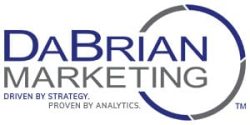Last week, I released my Tips to Move Toward Big Data & Enterprise Solutions that focused on your organization internally. This week’s 5 Tips to Move Towards Big Data & Enterprise Solutions are focuses on projects and customer outcomes from the data.
1. Think Data Quality & Security
In this day and age, it’s critical that you think of data quality and security for the long-term. What’s the point of having data if it’s not worth a damn? Work to implement data quality testing and regular data quality checks to ensure that you’re collecting as well as filtering to the necessary databases or solutions.
With all of the privacy issues and customer concerns, you’ll need to create data security policies and procedures. I would advise that you openly display your data collection polices on your website as well. The IAB is a great resource to help you self-regulate online behavioral advertising and how you use data.
2. Start small with a project
Rome wasn’t built in a day and Cesar didn’t build it by himself, so start with small projects. This will help get departments to collaborate and build relationships. It will also help to identify issues that would adversely impact larger projects so that you can develop a plan to solve the issues. Small projects will be the building blocks of long-term solutions for big data and enterprise solutions.
In my experience, if you can show proof of a successful small project, it will help the decision-maker to see the value and provide justification for universal data as well as the implementation of enterprise solutions. Tie the small project to brand or high-level strategic goals and objectives, and it will improve your level of internal support.
3. Focus on High Value & Good Customers
The small projects should focus on high value customers. It’s recommended that you look to answer questions about high value customers, such as who they are, how they interact with your brands, what marketing tactics are critical to conversions, etc. Again, align this information back to your organization’s goals & objectives to gain internal support.
4. Focus on Insights & Outcomes
The high value customers generally account for a large part of revenues, so focus on insight and outcomes that align with revenue generation. Think about what causes high value customers to complete an action or task. Sometime that data can help you develop hypotheses that can later be validated with surveys or focus groups. It’s recommended that you connect the quantitative and qualitative data but it needs to be simplified so everyone internally can understand the value of the data.
5. Don’t Measure Everything, Measure what Matters to the Project/Customers!
I’d heard many people say, “Measure everything,” and I understand the thorough process behind it. If you’re looking to move toward big data & enterprise solutions, I would recommend only measuring what matters for your specific project. How do you ensure that you’re capturing the data that matters? It starts with a measurement plan that aligns goals, objectives and KPIs for your project.
Conclusions
This list of tip should help to get your organization on the path toward “Big Data and Enterprise Solutions” but it’s not the end all, be all document. It should get your thinking about internal, external, and the politics that comes with navigation across business unit to develop value for marketing and your customers. Let us know what type of progress your organization is making and send us your recommendations to expand the list.
